#Digital Media: Sources and Significance
Explore tagged Tumblr posts
Text
9. The Walking Dead: A Game That Grows With You

The Walking Dead, a choose-your-own-plot game, was released in 2012 by Telltale Games. It's pretty popular, and it came out early, but I'm embarrassed to say I only just finished it! The charming characters and worldview of The Walking Dead completely hooked me. It's not every day that a plot-driven game makes me feel like I'm growing up as a character in a game. Most games with strong plots, even the super immersive ones, still make me feel like I'm just a player and not a character in the game. But with The Walking Dead, I felt like I was growing up with the main character in the story!
I'd like to explore why The Walking Dead evokes this sense of personal growth.
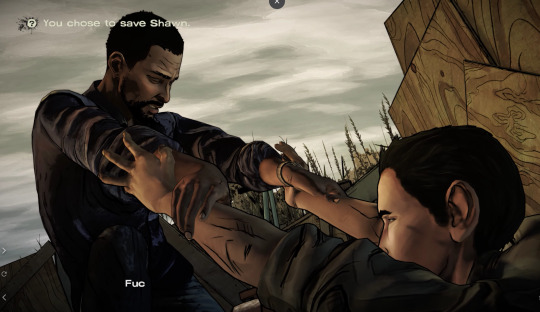
1. Story and Gameplay Mechanics Work Seamlessly Together
The Walking Dead is set in a world hit by a zombie virus. Each season, you take on the role of the main character and have to make choices that reflect the human struggles in this world. That's the heart of the game.
The Walking Dead is all about making tough choices, and the game lets you experience the story while choosing from different options that you think are right for the character. As you play, you start as an observer, but eventually, you become one of the characters and start affecting the story.
For example, in the first season, you're constantly making moral choices in a time crunch, like whether to save Kenny's son or help another teammate. These choices affect the trust between the characters and the plot's future. This is what makes the game so immersive and emotionally resonant for players.
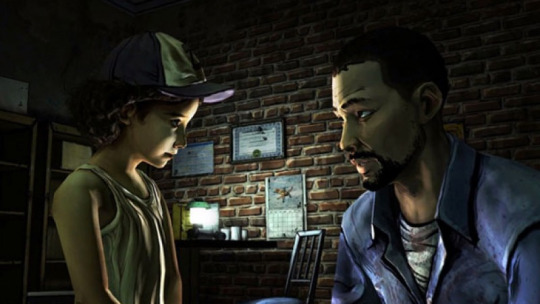
2. Character Design Evokes Strong Emotional Connections
Like I said before, The Walking Dead lets you make many choices. So, instead of saying that the player is playing a character, it's better to say that the player is really acting out of their own will, going through a series of choices, and becoming the character that they’re playing in the game.
This makes the player's emotional connection to the character more profound and stronger. It also creates strong emotional connections with other characters in the game.
For example, in the first season, players must play the main character, Lee, to care for a young girl named Clementine. As the game progresses, most players develop a deep connection with Clementine and want to protect and educate her.
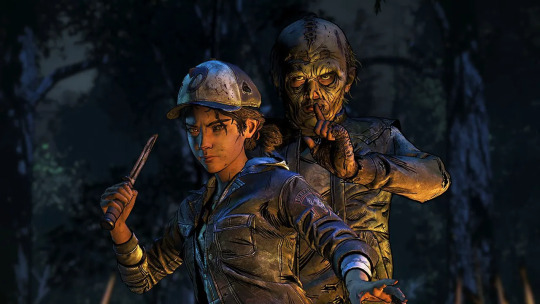
3. Comic-Style Art Design Enhances the Experience
The Walking Dead is based on a comic book by the same name. Instead of using a realistic art style, the game adopts a comic book style closer to the original.
This not only echoes the original manga and satisfies fans of the original manga but also gives the game's art style a unique visual recognition in the wider game community.
After all, The Walking Dead is set in a zombie-ridden world, and the story must be filled with gory fight scenes, so the art style avoids the overly realistic gore and achieves a more tense and artistic performance.

Conclusion
I'm a big fan of The Walking Dead. Besides the three points I mentioned, I also like that at the end of the game, a statistic table always shows which choices are most and least popular. This makes me feel connected to other players and allows me to think about my choices.
Overall, The Walking Dead offers a unique and interactive continuation of the player experience.
Reference
Game Developer (n.d.) The Walking Dead: Let Gameplay Support the Story. Available at: https://www.gamedeveloper.com/design/the-walking-dead-let-gameplay-support-the-story (Accessed: 5 January 2025).
Game Developer (n.d.) Classic Postmortem: Telltale Games' The Walking Dead (2012). Available at: https://www.gamedeveloper.com/design/classic-postmortem-telltale-games-the-walking-dead-2012 (Accessed: 5 January 2025).
2 notes
·
View notes
Text
Academic Blog #2
(If I had known I'd need to cite so much reference material, I would have quoted less content. And it seems I might have been a bit too chatty in my last piece.)
This time, let's talk about one of my personal favorite designs in the Mobile Suit Gundam series: the YMT-05 Hildolfr.
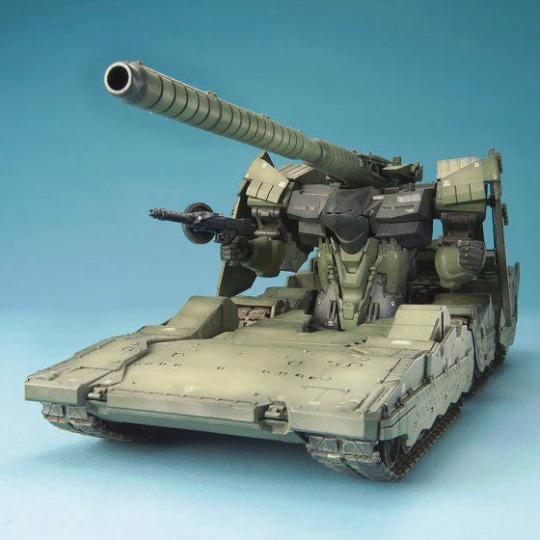
1/100 Model of YMT-05 Hildolfr (Mobile Mode)
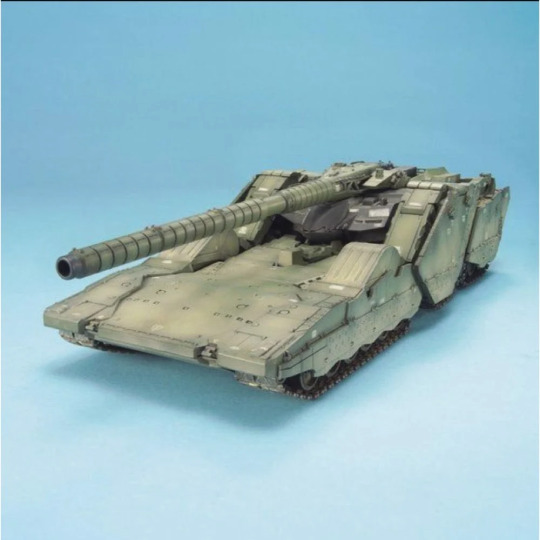
1/100 Model of YMT-05 Hildolfr (Tank Mode)
From a conceptual and hard-surface design perspective, the YMT-05 Hildolfr's design by Hajime Katoki is noteworthy for several reasons. The transformable nature of the Hildolfr, which allows it to shift from a mobile tank to a humanoid form.
The hard-surface design is especially prominent in the Hildolfr's tank form, where the emphasis on angular, protective plating contributes to a believable armored vehicle capable of withstanding and delivering heavy firepower. In MS form, these surfaces transition seamlessly to accommodate bipedal movement, showcasing Katoki's ability to blend form and function without compromising the integrity of either mode.
Additionally, the design of the main cannon, which maintains prominence in both forms, is a successful example of integrating a significant weapon system into the overall form factor. This not only enhances the visual impact of the design but also implies a practical and purposeful construction, an essential aspect of hard-surface design.
And the color scheme and the detailing work, including the panel lines and mechanical joints, give a sense of realism and practicality to the design. It suggests a machine built for purpose, rather than spectacle, aligning with modern design principles that value utility as much as aesthetics.
The Hildolfr's design strengths lie in its transformative ability, practical hard-surface detailing, and a functional weapon system integration, all encapsulated in a design that communicates speed, agility, and ruggedness.
Though it seems that not many fans have taken to this design, leading to its lukewarm reception. Perhaps, in the Japanese sci-fi domain, which often venerates the trendy aesthetics, a design that prioritizes practicality over flashiness fails to capture attention. But I'm quite certain that if such a design were to be more widely seen, its allure would surely spread far and wide.
References
Mobile Suit Gundam MS IGLOO: The Hidden One Year War (2004) Directed by I. Takashi. [Feature Film]. Bandai Namco Filmworks Inc.
3 notes
·
View notes
Text
The Critical Analysis
Han, Y. and Ho, X. (2024). ‘More Than Just Playing a Character’: Gender Exploration and Expression in Avatar Customization. Games and Culture. doi:https://doi.org/10.1177/15554120241307982.
In this critical analysis, I will concentrate on pages 4 – 6 of the article, More Than Just Playing a Character authored by Yisong Han and Xavier Ho. Han is a scholar whose major fields of interest refer to digital media, gender and players’ identity, whereas Ho targets gaming as a social process. In this paper, the authors analyze how avatar customizations in video games facilitate identity expression and enactment of gender non-binary and beyond. The selected section of the paper discusses three central themes related to gender expression and avatar customization: The three major approaches to analysing fashion are: (i) performing and navigating gender (ii) representing identity (iii) experimenting with gender. The authors disagree that avatar customization systems that exist in most games only offer two gender options while players engage in complex ways that move beyond these options. Interviews with 20 gamers of different gender are analysed in the articles, and, based on that, the authors outline how customization enables the reflection of gender as plurality, fluidity, and individuality.
Gender exploration and expression are defined more inventively with the help of Judith Butler’s (1990) gender performativity theory. Based on Butler’s concept of gender as the performance of authentic copies, the authors focus on how gender patterns are performed through avatars in a field of customizable interactions. In addition, there is a theoretical contribution as the results are discussed within the framework of gender and cultural studies.
The paper also describes avatar customization as fluid as players switch between male and female characters during the game. Modifying avatars is a design factor and a control aspect of the avatars that is part of gender exploration (Han and Ho, 2024). This is why free bonus points illustrate the value of flexible customization systems that allow players to continuously self-actualize.
Also, the social and psychological effects of avatar customization are acknowledged in this study. The main ideas are illustrated through participants’ descriptions of how virtual environments allow for testing new identities and are especially helpful for gender-diverse people (Han and Ho, 2024). This is evident with the real-life avatar in which P10 learned her real-life name, suggesting that the system has deep meaning.
As a qualitative study, one of its most significant assets is its ability to expound on the participant’s experiences in detail; however, the study's sample size only 20 applicants, restricts the generalizability of the results. The authors also strive for gender and geographic diversity, although the broader culture and demographic diversities continue to lag. For example, how the titled factors interact with gaming technology elements, and accessibility might contribute to understanding other facets of avatar customization.
Nevertheless, the study has research weaknesses, which if worked around in following research, could offer some worth insights. The time duration in which the survey was conducted and the number of responses collected from only 20 players also limit the extent of generalization of the results. The authors use the data based on the respondents’ own reports, and self-report measures may have various biases, particularly, while addressing the issues regarded as sensitive, such as gender identity. Further, all the players are from different countries, but there is no extensive discussion of possible cultural influences on the gender investigation and representation in games. For instance, female players from parts of the world where the traditional gender roles are well observed will experience a different level of difficulties or has a different experience compared to players from societies where there is equality handed down by the laws of the nations.
Given the study’s results, game designers and developers will significantly benefit. Through the given article, the authors share concrete suggestions to eliminate players’ necessity for the gender-lock matrix, emphasizing the need to create more fluid and diverse customization systems. Current Trends, the choice in Gender expression is also a part of it with adaptation, such as nonbinary pronoun usage, various body types, and fluid customization, all present to expand options in gaming.
Further, the study advances theories about games in identity construction and socialization processes. The concentration on gender exploration is also consistent with theories about Virtual Reality environments as self-identity development terrains. From this angle, games are used as instruments of power focusing on the enablement of the disadvantaged. The study also raises ideas in relation to the ability of the customization systems for avatars to cater for the individual identity as well as community construction within the gaming environment. Thus, different gender display accounts for the ability of games to provide representation and help in validating players’ existence. This inclusivity is beneficial as it can foster a culture technological inclusion by forming new positive online communities that can curb instances of toxicity and discrimination much related to gaming cultures. In addition, as gaming intertwines with other new media, like social and virtual, universally designed customization features may set a standard for other sectors regarding acting as the places for minorities’ inclusive representation.
On the one hand, the work contributes to the use of queer theory and intersectionality concepts in game studies from a theoretical point of view. By questioning the conventional roles and restrictions within avatar construction, the authors extend the analysis of how video game spaces can unsettle the real world’s power dynamics. This work also paves the way for future research on how these customization types relate to other cultural narratives in various societies.
Han and Ho’s study presents a convincing portrayal of generality through avatar appearance, supported by detailed qualitative information and solid theoretical frameworks. Nonetheless, the study is bounded by sample size limitations and scope for further research, which offers profound implications for designing more diverse and engaging game worlds. However, the work revealed the capacity of avatar customization systems to overcome the binary approach and contribute to the liberation of multiple players, thereby enriching the exposure of identity possibilities and tools. Applying the principles of flexibility in design and disrupting hegemonic paradigms, the gaming industry can propel positive change.
0 notes
Text
6. TRAIL London Through My Eyes: Architecture, Art, and Inspiration
For this blog, I want to share my experiences from the past three months of exploring the city, visiting museums, and exhibitions. I didn’t expect that experiencing London as a metropolitan city would be so captivating for me. I studied architecture, and I thought I had lost some of my passion for it, but when I saw London, my gaze was constantly drawn to the sky, the buildings, and their details. The combination of modern architecture with old buildings gave the city a stunning appearance. I truly understood how an environment that nurtures artists and exposes them to great spaces and artworks can help foster creativity.
The Tate Modern museum, aside from being a museum, stands out with its bold architecture amidst the modern, high-rise buildings around it. The structure itself beckons you inside to discover what’s going on within. Inside, there was a large and captivating performance: large, shredded pieces of fabric were being dyed by a wheel and turbine and hung from the ceiling of the Tate Modern. Over time, they dried and the color started to resemble human skin. The concept behind this project was reminiscent of the wounds people carry throughout their lives.
In the painting and media sections, seeing the works of great artists from around the world, side by side, and observing the different cultures, perspectives, and approaches was thought-provoking. The transfer of emotions through short films playing in alcoves and surreal paintings that engaged your mind in their concepts and meanings—all of these elements came together to reflect the interaction between humans and art.




Now I want to analyze an exhibition I experienced that seemed related to this semester’s modules. In the center of London, I came across an exhibition that was talking about AI, art, and light. I was intrigued and decided to check it out.
This exhibition was about Korean culture and was displayed through AI and interactive artwork.
The exhibition had 12 zones, and in each zone something new happened. Initially, they collected information from you that would later be used in the exhibition, such as your birthdate and the connection with a specific image, etc. One creative feature they had was the use of XR. By installing an app on our phones, we had to scan a QR code in each zone, which would unlock a doll in the app, similar to Pokémon Go.
I don’t want to describe each zone one by one, but I can say that my experience of the exhibition was that AI was used in a very basic and primitive way. All these innovations are things that ordinary people use daily on their smartphones. The lighting was relatively better and in some zones, it conveyed certain sensations. However, the images created by AI and projected onto the walls were really weak. The narratives about Korean culture and their children’s stories were interesting, but the execution was really weak.
Overall, I realized that even in London, a city known for art and fashion, you can have exhibitions and displays that are not perfect and still attract an audience. The strength of this exhibition was its strong presentation, whether through the app, the website, or the images they used, which tempted the audience to visit the exhibition.




References • https://delightexhibit.com
0 notes
Text
Critical Analysis
BEHM-MORAWITZ, E. and TA, D. (2014) ‘Cultivating Virtual Stereotypes?: The Impact of Video Game Play on Racial/Ethnic Stereotypes’, Howard Journal of Communications, 25(1), pp. 1–15. Available at: https://doi.org/10.1080/10646175.2013.835600.
The text I have chosen to analyse is an article that was published in the Howard Journal of Communications. It is an article written by Elizabeth Behm-Morawitz, a professor and chair in the department of communication at the University of Missouri, Columbia, and graduate student David Ta from the University of Missouri, Columbia. Behm-Morawitz’s work focuses on examining the impacts of media and how it influences perceptions of identity. Ta’s work focuses on cultural theory, communication and gender. Both authors provide an insightful perspective into the topic of medias impact on racial stereotypes, with a focus on the effect that video games have on impressionable audiences.
The article as a whole looks at the effects of video games and how they contribute to an understanding of virtual representations of ethnicity and race, and the real-world impact related to this. The authors focused on the game play of white college students, analysing their racial stereotyping based on the content of a specific game or genre.
I have chosen to look specifically at pages 11-12, as they focus on the key points presented by this study, which includes the impact of game play in relation to ethnic and racial stereotyping based on game content, and how this compares with their real-world opinions.
The first section introduces the main information and findings from the study that they previously conducted, with an emphasis on the effects of the game content on the group of white students racial stereotyping. It argues against the previously made idea that the cultivation effects are specific to certain games, showing that people’s response to game play is a better predictor of stereotyping and racial bias than a real-world interaction. The article debates the way racial and ethnic stereotypes appear in games and looks at the way that these stereotypes aren’t applied to white character in the same way as they are to black and Asian people.
The next section of the article looks at the way that the amount of time a game is played for has a connection to the beliefs of white people about stereotypical representations of black people. The study shows that more frequent gameplay has a significant association with negative views against people of colour. It focuses on the cultivation theory’s idea that repeated exposure to stereotypes has a real-world impact on the way an individual’s attitudes and opinions are formed or changed. The idea of a “video game diet” presents an interesting concept that compares video game exposure to someone’s diet, showing that what you consume has an impact on your mind and body.
The following section looks at an analysis of how a player’s preference for specific game genres impacts their racial bias or views. The study indicated that there was a potential for genre specific impacts, the main issue was coming from the frequency of the games being played. It also specifies that video games are just as impactful as other media forms at changing someone’s ethnic stereotyping, focusing on how television can also be impactful. By connecting video games to television as a storyteller, the authors show that video games are a powerful and under-utilised media format that should have more attention.
Looking further into how virtual representations can affect public perceptions of races, the text draws connections between the way that video games represent different races to the way players perceive them in real life. By understanding this, the article shows that diverse and authentic portrayals in video games is an important topic to look at and shows the responsibility game developers have to create more inclusive characters and narratives that avoid adding to dangerous and harmful stereotypes. While the study shows a correlation between gameplay frequency and racial bias, it’s important to look at other factors that could influence this. External influences and pre-existing beliefs have not been considered in this article and would have a huge impact on the outcome of the study.
The final section of this article looks at how people’s perceptions on race are impacted differently through video games and through real world interactions with different racial and ethnic groups. The outcome of this part of the study revealed that video games consistently had a stronger association with racial stereotypes than real world interactions. The concept of the “mere exposure effect” from Zajonc’s theory suggests that the way video games have repetitive ideas creates a familiarity with racial stereotypes, which ends up normalising it to the player as they are repeated exposed to the same stereotypes. This shows that people that the more players engage with video game content, the more likely they are to internalise stereotypes that change their perceptions. The article discusses the possibility that real world interactions between races are likely to be more diverse and varied than the interactions seen in gameplay, and that people are more familiar with the stereotypical representations shown in video games. This in addition to how immersive video games are nowadays and the repeated exposure to negative representations has the biggest impact on the way people’s perception and behaviours can be changed.
The concluding paragraph of these two pages focuses on the study’s results on cultivation theory and the way white people perceive black people based on racial and ethnic stereotypes in video games. The authors discuss the fact that cultivation theory can also be applied to video games, when previously it had mostly been applied to television, adding to the argument that it can be used for multiple media forms.
This article was interesting and important to my work as a games artist because it further confirms the importance game developers have in creating a more diverse and positively represented industry. The authors make a strong analysis on the way video games directly impact public perceptions of different racial and ethnic backgrounds and was successful in showing the connection between different media formats and cultivation theory. This article shows a strong understanding on the importance of authentic and diverse representation.
0 notes
Text
Digital Media : Sources & Significance
Critical Analysis
H.. Desamsetti & K. Lal(2019) , “Being a Realistic Master: Creating Props & Environments Design for AAA Games”, Asian Journal of Applied Linguistics, Vol. 6 No.2
Introduction
The data I've chosen to analyze is an article on Being a Realistic Master: Creating Props & Environments Design for AAA Games, which is written by Harshith Desamsetti & Karu Lal from Asian Journal of Applied Linguistics (volume 6, No 2). H. Desamsetti is the Senior Software Engineer at Charter Communications in USA and K. Lal is the Integration Engineer at Ohio National Services in USA. Both authors have unique perspectives about this topic and have solid authorities in their fields.
The overall article talks about the process of creation and realistic environments for AAA video focusing on the techniques, limits and strategies involved in creating visually stunning and authentic environments. The authors states that “the games come to life because of a well-designed environment, which provides additional layers of depth, context and emotional effect to the narrative. And here, I’ve chosen pages 195-196. In these pages the authors have been discussed as two main topics, ‘Role of An Environment Artist’ & ‘Environment Design from Scratch’.
Role of An Environment Artist
The duties and responsibilities of an environment artist can be discussed as two, ‘making the world & Teamwork’.
In the creation of game world the main duty of an environment artist is to create a realistic world which includes a variety of tasks such as designing the layout, creation of layout elements and props, and handling overall elegance. The size of the project (small independent game or AAA development) has a big impact on the artist’s performance. In small-scale manufacturing, the environmental designer may own a large portion of the pipeline, handling various activities from dressing & these impacts in scale effect. In the independent game development design to final product. AAA games can have a focus on specific elements like set decorating , the artist can be involved in the process of designing, blocking and creating the last form of props and structural parts. The process can vary greatly in AAA productions, with concept art providing the settings and level artists handling the blocking. Decorating the set, the addition of various elements to the environment for the quality of being real is the key point in both cases.
Working as an environmental artist play an important role in collaborations with other departments which includes working with level designers, art directors, concept artists, prop artists and animation directors to turn blackout designs into suitable form of levels, it is the result of Teamwork. These highlight’s the varied and dynamic roles of environmental designers, emphasizing flexibility depending on the scope of the project. Designer responsibilities range from world building to highly collaborative teams, reflecting their role on tangible aspects of the video game environment.
There are some departments that environmental designers often collaborate with to create a cohesive and immersive gaming experience.
Level Design: Responsible for playing the initial block at game level. Blockout collaborates with environmental designers to transform a beautiful and playful environment.
Prop Art: Creates props and additional content, including textures. He coordinates the export of props, which contribute to the overall aesthetic and functionality of the theater.
Animation: They keeps the spirit or order in the environment alive. The animation seamlessly integrates with the game world and collaborates with environmental designers.
Game Design: They focus on the overall design of the game. He works with environmental artists to showcase game elements such as weapon availability, player abilities, and other interactive elements.
Concept Art: Through conceptual art, he generates ideas and plans for the environment. Concept designers provide visual feedback and inspiration in the development of game worlds.
Art Guidelines: Collaborates closely with concept designers and other department members to ensure visual cohesion throughout the game. Art directors play an important role in shaping the overall artistic vision.
Technical Art: It ensures that the game works properly on different hardware platforms. Creates tools and products for environmental designers and other departments to increase operational efficiency and solve technical challenges.
Marketing: The one who is responsible for promoting the game. Although not directly involved in the making of sporting assets, the marketing department plays an important role in exposing the work of environmental designers to a wider audience.
Environmental Design from Scratch
The process of designing environment begins with brainstorming. ‘Google’ and ‘Pinterest’ can be used to collect a variety of visual references. That might be photographs, film, and conceptual art of people and ideas. The artist intentionally looks only for references that may be loosely related to the main concept. This’ll helps in creating unique and innovative ideas by drawing inspiration from a wide range of sources. A selection of screenshots and references have been compiled into a mood board. It acts as a visual collage encapsulating the aesthetic, style and desired perspective of the project. Artists then proceed to rapidly create images based on the collected references. These diagrams are a preliminary analysis of ideas and help visualize the overall layout. Depending on the needs of a project, artists can create a set of drawings or detailed utility drawings. This phase involves refining the baseline image to produce a more realistic representation of the suspected objects.
Artists use sketching as a problem-solving tool if there are already elements in the layer that need to be fixed due to artistic connection or technical limitations. These images were created with the specific purpose of finding answers to design challenges. The methodology described goes beyond the traditional steps of brainstorming, gathering reference data, gathering reference data, and creating a sensitivity score. Instead, the team immediately starts simulating the environment in the game engine. The team may work with little or no feedback, or they may only work in group sections selected by art direction. This simplified process shows a spontaneous and immediate way of translating concepts into the game environment. Sketching is sometimes used as a tool to find solutions for existing features in a layer. This includes addressing artistic confidence in a particular game universe, such as “for the sake of honor” or overcoming technical limitations imposed by level design. After creating a design on the engine, the team seeks approval, obtains it and proceeds to remove the asset. This includes ensuring appropriate calculations and making enough adjustments based on feedback from the art director. The modeling is then outlined, and high-quality renderings of the elements are created using tools such as ‘ZBrush or 3ds Max’. Then Unwrapping (UV mapping) occurs during or after the modeling process. The group continues to go first with materials, textures and lighting.
The team’s responsibility at Ubisoft focuses on modeling and level art. The team works independently across projects, and the workflow is more organic. Once the team is satisfied with the results, they move on to polishing the lighting, followed by polishing materials and designs to achieve the desired effect.
Conclusion
In overall, the authors discuss about the artist’s duties range from world creation to extensive collaboration across departments, demonstrating the significant roles they play in shaping the visual aspects of video game environments. While the environment artists work collaborates with several elements, such as level designing, animations and the overall artistic direction in the process of game creation. A graphic approach to problem solving and integrating different roles within the team implies a dynamic and iterative process in environment design.
2 notes
·
View notes
Text
9.Unpacking the Emotional Resonance of Hades: Redefining Roguelike Narratives in Gaming
Introduction: The Affective Power of Roguelikes:
The opportunities and possibilities of combining mechanics and narrative have been of interest to the gaming industry for some time. One of the most vivid examples is a game called Hades (2020) developed by Supergiant Games. Hades stays closely tied to the foundations of the rouguelike subgenre of dungeon crawlers, but manages to tell a deeply personal story that charges the game with an emotionally engaging experience. This blog will look at why Hades is an affective game, how it affects the emotions of players and why everyone thinks about it even when the screen is off.
Emotion Appeal in "Hades"
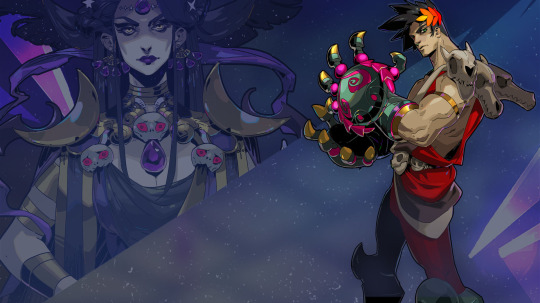
1. Narrative-Gameplay Integration
Hades is essential, as shown in the story of Zagreus, who is the son of Hades and who tries again and again to escape the underworld to discover his lineage and true self. Even the game's rogue loop of runs pleasantly moved the narrative forward.
● Failure as Progress: Unlike other games where failure is penalized, in Hades the most the player can do is die and last another round of combat, leading to additional character dialogue and story.
● Immersive Character Arcs: Zagreus cultivates friendships with a number of famous Greek gods, all of whom have different temperaments, moods, and feelings that add complexity to the retelling.
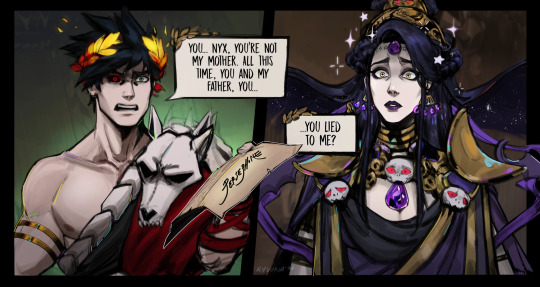
2. Related Topic: Importantly, Hades is about family, identity and perseverance.
● Family Dynamics: Amphitryon's difficult interactions—his broken friendship with Hades, his desire for his wife Persephone, and his friendship with the gods—reflect real family issues.
● Persistence and Growth: Couple this with the fact that trying, failing, and trying more closely resembles real life, and it becomes an almost cathartic cycle.
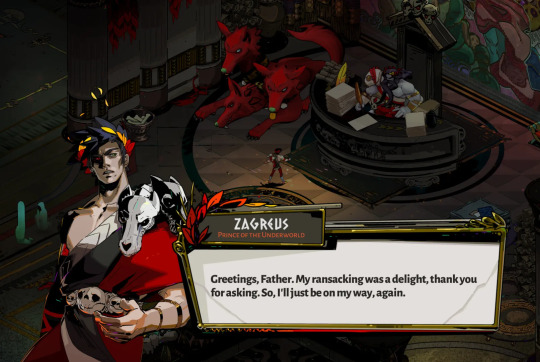
Why is "Hades" so Effective?
1. Dynamic Character Interactions
Hades uses a procedural dialogue system that ensures characters react uniquely to the player's progress and failures.
● Realistic Relationships: The characters evolve with Zagreus, showing growth, empathy, and the occasional frustration that makes them feel alive.
● Emotional investment: It's actually fun as players form a real bond with characters and objects in the game such as Nyx, The Night; Achilles their master; and Cerberus, a faithful watchdog.
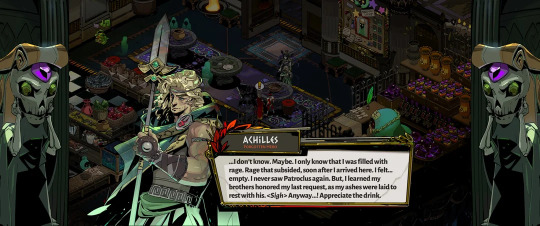
2. Art and Sound Design
In the case of Hades, the aesthetic and acoustic value enhances the emotional cut.
● Art Direction: Literally alive and hand-drawn, the animation really makes the presentation appealing and lends to the contrast between the dirty underworld and the light of heave
● Music: There is orchestral music for various objectives and tracks that are quiet and at some moments intense and fast as a heartbeat.
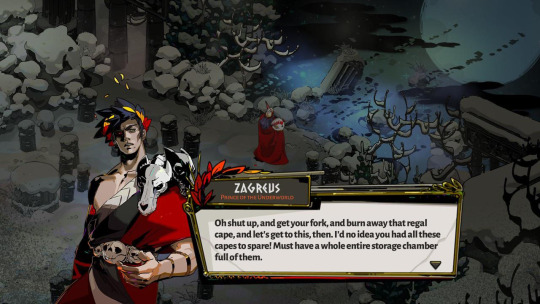
3. The Role of Player Agency
Player choice in dialogue and weapon upgrades add a sense of control.
● Boon selection: All escape attempts allow players to choose Divine Blessings (blessings) with gods such as Athena or Dionysus, which opened up character arcs.
● Ethical Dilemmas: The decisions you make in conversation – options created when presented with options such as and dealing with characters or a dilemma affect the tone of the floor.
What Affects "Doing"?
Drawing on theories of cultures of digital affect (Döveling et al., 2018), Hades shows how affect increases player engagement:
● Enhancing Empathy: Through nuanced storytelling, players develop a deep understanding of character motivations and struggles.
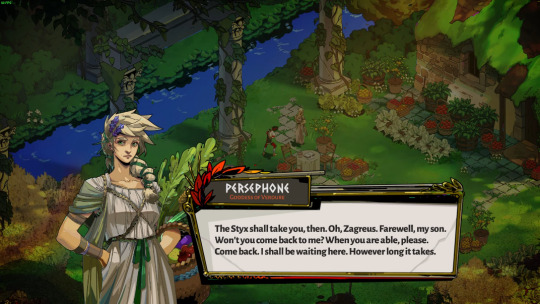
● Encouraging Persistence: The game loop reflects life's challenges and creates an emotional bond through a shared experience.
● Community Building: Online platforms like Reddit and Discord are abuzz with discussions about favorite player characters, strategies, and emotional moments that extend the affective experience beyond the game.
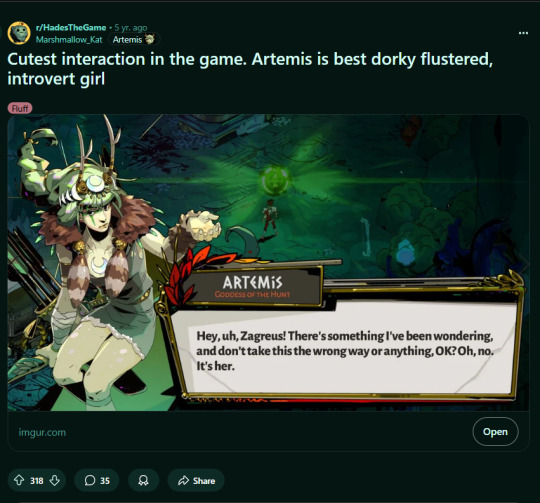

Conclusion: Lessons from "Hades"
Hades is a core element of affective game design, bringing the perfect harmony of narrative, mechanics, and visuals to evoke full-bodied emotions. Failure becomes a narrative resource and, through the depiction of common themes, transcends the boundaries of its lineage and leaves a timeless message to society.
For other game developers, Hades creates a blueprint for producing emotionally compelling games that are not just entertainment products. In this way, we will focus more on the characters and the treatment of the respective themes to create a fascinating dynamic, and therefore it will be easier for the developers to reach the hearts of the players to ensure that their creations will live among the players.
Referencing
Döveling, K., Harju, A. A. & Sommer, D., 2018. 'From Mediatized Emotion to Digital Affect Cultures: New Technologies and Global Flows of Emotion'. Social Media + Society, pp. 1–11. Available at: https://journals.sagepub.com/doi/10.1177/2056305117743141 [Accessed 29 November 2024].
Supergiant Games, 2020. Hades. [PC, Nintendo Switch, PlayStation, Xbox]. USA: Supergiant Games. Available at: https://www.supergiantgames.com/ [Accessed 29 November 2024].
Döveling, K., Harju, A. A. & Sommer, D., 2017. From Mediatized Emotion to Digital Affect Cultures: New Technologies and Global Flows of Emotion. Available at: https://www.researchgate.net/publication/318960758_From_Mediatized_Emotion_to_Digital_Affect_Cultures_New_Technologies_and_Global_Flows_of_Emotion [Accessed 30 November 2024].
Morton, J. (2021). 'How Hades Revolutionized the Roguelike Genre.' Polygon. Available at: https://www.polygon.com. (Accessed: 30 November 2024).
MacDonald, K. (2020). 'Why Hades is Game of the Year.' The Guardian. Available at: https://www.theguardian.com. (Accessed: 30 Novmber 2024).
Supergiant Games (2020) Hades. Available at: https://www.supergiantgames.com (Accessed: 1 December 2024).
Reddit (2024) Hades: The Game Community Discussions. Available at: https://www.reddit.com/r/HadesTheGame (Accessed: 1 December 2024).
#Source and Significance#EMOTIONS - The visceral side of digital media#Hades#zagreus hades#persephone.#achilles#game design#video games#learning games#beingmughal#game#hertfordshire#anime and manga#art#anime#relationship#love language#family emotions
1 note
·
View note
Text
haikyuu characters as romance tropes + songs in my playlist ❀
a/n - this was a thought i needed to get out..! i love music n i love haikyuu soooo. i also did a series similar to this but w actual one shots but tbh compiling them is smarter ngl. totally fw the spotify linked in my nav btw :0 — unedited drabble/thought piece

——“ they just can't reach her, princesita inalcanzable / le rompieron el cora, pero nunca se la perdió" (igual que un angel, 2023) - after years being your friend, getting friend-zoned for so long and finally getting a chance to date you, they're whipped and put you on a pedestal. they know all that you've gone through regarding relationships and would want nothing but your happiness. they're the immense green flag you need and would treat you with nothing but respect, sending you notes in class, and making you little bento boxes filled with their cooking, sending small poems that remind them of you but then again, you deserve it. you're as sweet as sugar and in their eyes, you're an angel on earth. they don't know when their feelings for you started, but when they finally confessed to you, it was the happiest they've felt. you've been their “other half” for so long that all your mutual friends have been telling you to get together, so imagine your friends' reaction when they see you and them on a date one random day, hand in hand and with your head on their shoulder as the two of you sat waiting for the bus back to your place.
best friends to lovers : kageyama tobio, BOKUTO KOTARO, ojiro aran, IWAIZUMI HAJIME, SHIMIZU KIYOKO
——"only like myself when im with you / nobody gets me like you” (nobody gets me, 2022) - both of you strive for excellence, only really wanting to achieve the best academically and on the court during gym class. it's obvious how strong your rivalry with him is, that even your friends jokingly tell you "just kiss already" when you already do. the two of you would be taking little secret rendezvous when you're supposed to be studying to be at the top of your class and staying up after his volleyball practice when everyone leaves. it felt thrilling as no one knew about your relationship (after constantly bragging that you didn't need a significant other). but once your grades began to slip, you couldn't risk losing the source of validation you've gotten to know for so long. you still had your ego and your pride to maintain, and he understood. he understood more than anyone which is why you felt yourself so emotionally attached to him. leading the both of you to enter an almost endless cycle of attempting a secret relationship while also trying to achieve validation from academic success.
rivals to lovers (and rivals again) : shirabu kenjiro, KITA SHINSUKE, tsukishima kei, sakusa kiyoomi, KUROO TETSURO
——"i burn for you / and you don't even know my name" (close to you, 2024) - after accidentally adding them on social media from quick add (due to mutuals from school), you find yourself in a predicament. you're from the same school and know of them, but know that you have never talked to them. you've never even interacted with them at all in real life. though, for the past few weeks, they're earned themselves the title of a talking stage, staying up until 3 in the morning sometimes, just to talk to you. you two would play valorant or whatever video game you’ve been wanting to play and last hours on video call, sharing playlists and being mutuals on everything. although, talking for so long caused him to be a little bold, flirting with you a bit. you're in different classes yet every time you have a break in class, you talk to them, sending snaps of what you do and so does he. so when you finally have your first date in person, you panic and in all honesty, he does too. what if you two don't get along? what if you thought he was weird? your first thought was that he's very handsome, that's for sure. though, it felt that all you really needed was to just talk as you've gotten past the digital barrier and had natural chemistry in real life.
online love : kozume kenma, SUNA RINTARO, miya atsumu, TENDO SATORI, terushima yuji
——"no one's ever good enough / i want a love like i've seen in the movies" (like the movies, 2021) - you met them at a barnes and noble during a regular day after school. you’ve always been a hopeless romantic, longing for love between the pages of a romantic comedy book or film. so when you bumped into them, books in hand, it felt like a spark between you two. the two of you ended up exchanging numbers to talk more, then meeting up and talking / hanging out in person (a date in your opinion). being in a relationship with someone else who also understood the want to fall in love “romantically” felt amazing. every time your school would have a game, you’d go and cheer them on from the sidelines, wearing his spare jersey. good morning texts, gift baskets for monthaversaries, huge love letters, and frequent dates felt too good to be true, and it was. you can always expect them to have heart eyes and only for you, as well as listening to your rants and theories surrounding different romance novels and films. especially your thoughts on the concept of the meet cute.
meet cute : AKAASHI KEIJI, yamaguchi tadashi, sugawara koshi, OIKAWA TORŪ, miya osamu, SEMI EITA
#haikyuu#haikyuu imagines#haikyuu headcanons#suna x reader#sakusa x reader#kageyama x reader#ushijima x reader#akaashi x reader#bokuto x reader#atsumu x reader#osamu x reader#sugawara x reader#kita x reader#tsukishima x reader#kuroo x reader#kenma x reader#iwaizumi x reader#hq x reader#angel’s thoughts#haikyuu imagine#haikyuu fluff
302 notes
·
View notes
Text
It's so stupid how people talk about ideas on social media as though they're the product of aliens or demons or something, arbitrary notions from a bizarre realm with no relation to "The Real World". Like the digital world is a product of the physical one, and ideas in the former reflect the ideas of the latter. Meanwhile ideas from the digital world in turn influence the development and spread of ideas in the physical. Sure some level of distortion takes place due to various factors like the structure of specific websites, user demographics etc. For example certain ideas are more prevalent in certain social circles than in the broader population, or you'll see a specific variation in ideology online that lacks a significant political presence physically. But these ideological "aberrations" are still very much rooted in "The Real World", with any variations from "Real" ideology occurring for reasons beyond random insanity.
Even in cases where things are written without sincerity or direct human intention, trolls and bots and all the other sources of internet "fake stuff", those "nonsense" statements don't exist in a vaccum. The kind of ideas a troll thinks will be most stupid and obnoxious are something they thought of and judged based on the values they do genuinely hold, while all the data output by bots is a product of whatever "real" data was put into it in the first place. That's not to say you should take every scrap of info you see on the internet completely seriously; there's certainly a lot of meaningless nonsense that's worth ignoring by itself. But you need to stop acting like there's an absolute separation between the "Real" physical world and "Fake" digital one. Appreciating the relationship between the two is vital if you want to understand either the internet itself or how it actually affects the physical world.
Because the internet is fundamentally still a part of our reality; it couldn't exist without the physical infrastructure that supports it while the data and ideas found within can be ultimately traced back to various aspects of the material world. It's misleading to refer to the physical world as The Real World, because Online is also Real
70 notes
·
View notes
Text
Elmo is a Jerk and NPR Reporters are Meanies!
by Marie Newman
May 7

I started formulating my opinions about Elmo and PBS a long time ago. About twenty years ago, I interviewed a PBS viewer, and he shared, “yea I don’t like him, he makes me be nice, when I don’t wanna.” That young viewer was my son, age 6 at the time. Clearly, Elmo was trying to influence my son.
I get it, really. The current president has had some negative experiences with both PBS stars and NPR news. They have asked him questions he does not want to answer. Rude!
Let’s examine Big Bird, weirdly tall, always happy (God only know what meds he is taking?). Also, there is always a chance he might be linked to a terrorist group or gang. Then there is Burt and his ever-present friend, Ernie. People do not like how cozy they are. Very suspicious. HMMMMMM.
I am equally concerned with programs like Masterpiece Theatre and Downtown Abbey. Absolutely subversive. Very stuck up, if you ask me.
And do not get me started with those doo-doo heads at NPR. They are always “investigating” or “exploring new worlds” or providing “Fresh Air.” All that truthing and incisive investigative work is exhausting. Then the cultural exposure to others’ traditions - good Lord, who wants all that interesting and enlightening stuff coming at you all the time? Their calm and earnest demeanors are just sneaky, I think. Yikes, you cannot trust a reporter who is not yelling at you with hyperbolic claims without data. Everybody knows that. Duh.
So Really, Tell Me What Has PBS Done for Children?
Studies have shown that PBS programs, particularly Sesame Street, have a positive and measurable impact on children's educational development. Here are some key stats on their effectiveness:
Literacy and Literacy Skills:
Research indicates that children who watch Sesame Street between ages 3-5 demonstrate:
Higher literacy scores (approximately 1 year ahead in reading readiness) compared to non-viewers.
Significant gains in letter recognition, phonemic awareness, and vocabulary.
School Readiness:
A study published in the Journal of Educational Psychology found that children exposed to PBS early childhood programs showed:
Better readiness for kindergarten.
Improved social-emotional skills and self-control.
Long-Term Academic Benefits:
Longitudinal research shows that children who engaged with PBS early learning content tend to:
Perform better in school in subsequent years.
Have higher graduation rates later in life.
Impact on Underserved Communities:
In low-income populations, PBS programs and resources have contributed:
To narrowing the achievement gap in early literacy and numeracy skills.
Increased access to quality educational content outside of classroom settings.
Cost-Effectiveness:
The Children’s Television Workshop (now Sesame Workshop) estimates that for every dollar invested in Sesame Street, there is a return of approximately $12 in societal benefits related to improved education and social outcomes.
What the Heck Does NPR Do -Why Do We Need It? Turns out quite a bit…
Audience Reach:
As of recent data, NPR reaches approximately 30 million Americans each week through radio, digital platforms, and podcasts.
NPR's digital content garners over 50 million unique online visitors monthly, indicating substantial engagement.
Trust and Credibility:
Surveys, such as those by Edelman, show that NPR consistently ranks among the most trusted news sources in the U.S., with over 60% of Americans trusting NPR for accurate and balanced news coverage.
The Pew Research Center reports that NPR is one of the most trusted media organizations, especially among adults seeking in-depth, unbiased reporting.
Informational Impact:
A Nielsen study found that 70% of NPR listeners feel more informed about current events after listening.
NPR's coverage of critical issues like politics, health, and science helps shape public understanding and debates.
Educational and Civic Engagement:
NPR's programming encourages civic participation, with many listeners stating that NPR coverage motivates them to vote or engage in community issues.
NPR podcasts have increased awareness of social issues; for example, podcasts like Code Switch and Hidden Brain have millions of downloads, expanding public discussion on race, psychology, and societal challenges.
Diversity and Access:
NPR's commitment to diverse voices and topics reaches underserved communities and minority populations, fostering inclusivity and broader societal understanding.
That, right there, just proves it, right? We, as a country just cannot be opening up people’s minds all the time. Too expensive and scary! We certainly can’t be giving parents a break while kids are viewing the likes of Cookie Monster, Julia, Count von Count or Tango. Those characters will certainly not help kids be more confident, comfortable in the world, articulate, interested in learning or joyful. Nope. They must go.
As for NPR, Whew! Let’s get rid of those talented reporters, producers, on-air talent, production teams that have delivered robust Peabody-award/Pulitzer-prize winning stories and interviews. All that fact-based, objective reporting cannot be good for anyone. Yuck!
Historical Record: Republicans have been trying to remove funding for PBS and NPR forever…
The efforts by some Republicans to defund PBS (Public Broadcasting Service) and NPR (National Public Radio) have been ongoing for several decades, reflecting broader debates over government funding of public media and its role for a half -century!
Early 1990s: Criticism of public broadcasting emerged from conservative circles concerned about perceived biases, content, and the cost to taxpayers. Some legislators proposed reducing or eliminating federal funding for PBS and NPR, but these efforts generally did not succeed in enacting significant cuts.
2000s: During the George W. Bush administration and subsequent years, there remained occasional proposals from some Republicans to cut federal funding for public broadcasting, often citing concerns over ideological bias or fiscal conservatism.
2011: A notable milestone occurred when the Republican-controlled House of Representatives proposed budgets that included substantial cuts to federal funding for PBS and NPR. This was part of broader austerity measures. While some funding was reduced, many of these cuts were not fully enacted or were reversed in later budget negotiations.
Recent Years: The debate has persisted, with some Republican lawmakers continuing to push for defunding or restricting federal support for public media, arguing it’s unnecessary government expenditure or that it promotes biased content. Conversely, supporters argue that public broadcasting provides an important educational and informational service, often serving underserved communities.
The attempts to de-educate Americans is nothing new, but must be stopped. As usual, use your voice and tell your story.
What Can Be Done?
1. Let the U.S. senate Majority Leader and Speaker of the House know how you feel ans share a story about how NPR and/or PBS have helped your family. Call your own senator in your state and then call:
Leader John Thune: 202-224-2321
Speaker Mike Johnson: 202-225-4000
2. Write An Opinion Editorial in your local paper
Have a great week folks and keep going my friends,
28 notes
·
View notes
Text
the people who made (and people who update) the disturbing movie iceberg should be flogged for successfully getting a significant number of people to catalogue actual Films like Martyrs (2008) as the same thing as ogrish live death footage mixtapes. technically the race to the bottom to see the most horrible thing that could happen to someone on film has always existed in some form or other, but the cottage industry propped up around digitalized death is something that a lot of viewers dont even understand theyre participating in. the guys who frankenstein together death mixtapes sell them for real money, youtubers react to them or talk about them for millions of views and ad revenue, and regular people are primed by this whole transaction to view media like this as an endurance test instead of the suffering of real people being monetized. It's not really a coincidence that a lot of the clips are seemingly sourced from the global south either. victims of freak accidents or violent crimes are rarely granted privacy or reprieve, but I imagine that the outrage would at least be greater if most of the content of these videos were sourced from Your Town, USA or whatever instead of latin america or SE asia. there's a grotesque chauvinism to what is already a very demoralizing phenomena of gazing slack-jawed from your computer at death tailored for mass consumption. It makes the glib narration in Faces of Death (1978) seem poignant.
for years people asked "Does snuff exist?" and the answer was usually "probably", but now it doesn't really matter anymore. The guy making a profit from supplying Cute Dead Girls Volume 14 on private telegram chats is providing the same seedy market component that made people curious about the existence of snuff, but the public's response is "you got anything else I'm so boreeed".
84 notes
·
View notes
Text
10. The Diverse World of Game Art Styles: How They Shape Player Experiences
As tech has advanced and more diverse games have entered the market, the art style of games has evolved significantly. Game art is always the first thing that grabs players' attention, and it's not just about how the game looks. It actually affects how immersed players feel, how emotionally connected they are to the game, and how deep their experience is. In this post, I'll explore how a game's art style directly influences the player's experience.
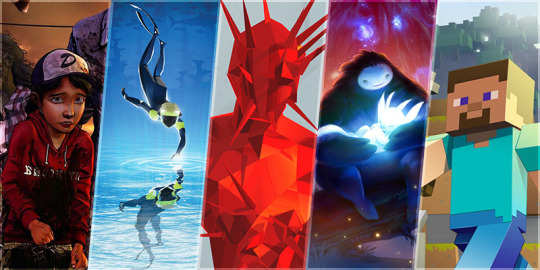
Game Art Style: Establishing Identity and Atmosphere
The core reason why game art style has such a profound impact is that it establishes the identity and atmosphere of the game world. Simply put, game art style is like an artist's painting style. Each person's unique painting style reflects their preferences and life experiences, conveying a strong personalized message. Similarly, a game's art style draws players into its unique world without the need for introductory text—just by allowing them to experience it visually.
Three Common Game Art Styles
1. Pixel Style
Pixel art has been a popular choice among gamers from the past to the present. Its charm lies in creating unique visual effects with minimal resources.
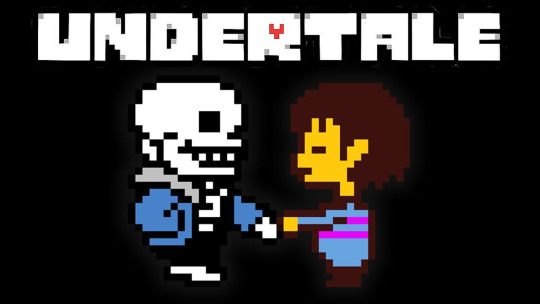
For example, Undertale is a standout pixel RPG. Its minimalist pixel style builds the game's visual world, strengthening the core characteristics of its characters while echoing the heart of Undertale's story. Additionally, pixel art evokes nostalgia for classic games, a feeling that's hard to replicate with other styles.
2. Hand-Drawn Style
The hand-drawn style is often found in indie games. This style maximizes the expression of the creator's personal touch and enhances the atmosphere of the game's worldview.

Hollow Knight exemplifies this beautifully. Its unique hand-drawn art style conveys a vast, intricate world filled with solitude and adventure, allowing players to feel its depth and mystery.
3. Realistic Style
Highly realistic 3D art is the go-to choice for modern AAA games. This style's ability to bring players close to reality enhances immersion and showcases technical prowess.

Take The Last of Us Part II, for instance. The production team employed a highly realistic style to recreate a post-apocalyptic world, immersing players fully in its desolate and haunting atmosphere.
Conclusion
In conclusion, a game's art style is a crucial choice during development as it serves as a powerful tool for conveying messages to players. Each art style has its unique characteristics, and as time passes, new styles will surely emerge. However, no matter the style, game art remains the key gateway for players to enter and connect with the game world.
Reference
IXIE Gaming (n.d.) The impact of game art on player experience. Available at: https://www.ixiegaming.com/blog/the-impact-of-game-art-on-player-experience/ (Accessed: [6 Jan 2025]).
Pixune (n.d.) Indie game art styles. Available at: https://pixune.com/blog/indie-game-art-styles/ (Accessed: [6 Jan 2025]).
Hickman Design (n.d.) The art behind gameplay: Journey through video game visual styles. Available at: https://hickmandesign.co.uk/blog/history/art-behind-gameplay-journey-video-game-visual-styles/?srsltid=AfmBOooULwRrMnryqk_GtlPGIrAlqEaB9TniOcJ44NjyFIoe5BWewRT7 (Accessed: [6 Jan 2025]).
0 notes
Text
Academic Blog #10
Finally reaching the last planned piece, I'd like to touch upon one of my all-time favorite game series, Bayonetta, discussing how this female-led game series has made a unique impact in the action game genre with its distinctive material and artistic style.

Bayonetta (2009) & Bayonetta 2 (2014)
Today's gaming world still largely lacks charismatic heroines as protagonists, and the action game genre, often dominated by masculine traits, finds a refreshing change in Bayonetta, carving out a female-centric cultural niche. Created by Hideki Kamiya, also the founder of the Devil May Cry series, Bayonetta was envisioned from the start as an action game filled entirely with feminine elements. This idea, which seemed crazy and obsessive at the time, gained immense popularity upon the game's release. Defeating enemies with dance-like grace and moving seductively through dangerous battlefields, Bayonetta’s character design, handled by concept artist and fashion designer Mari Shimasaki, skillfully blends fashion elements and unique interpretations to create an iconic and fancy character image.

Concept of Bayonetta for Bayonetta 2 (2014), from the art book The Eye of Bayonetta 2, by Mari Shimasaki
Bayonetta offered players an unprecedented freshness, combining excellent gameplay design and a tactile experience, achieving immense success upon its debut.
To me, Bayonetta's most appealing aspect is its rebellion against stereotypes and traditional conventions. The protagonist, Bayonetta, a witch who and her kin were persecuted in the Witch Hunts – a reference to the unjust historical trend against women that actually occurred in the medieval world. Women not conforming to the mainstream were stigmatized, accused of witchcraft, and harmed as heretics or witches. Bayonetta uses witchcraft and magic to defend herself, collaborating with various demons from Inferno, breaking through any force that stands in her way.
Enemies encountered in the game are mostly angels from Paradiso (Paradise), named after beautiful and praiseworthy things.

Grace & Glory, from Bayonetta (2009)
Though adorned with lavish elements like marble, gold, and holy halos, most angels have bizarre body structures and fierce faces, which enhances the uniqueness of these characters. Even at the end of the first game, Bayonetta faces her biological father as the last boss, which can be interpreted as a challenge to traditional patriarchy. The idea of beauty corrupted into threat reflects how the Bayonetta series has carved a rebellious path.
This rebellion has been warmly embraced by the queer community among the players, perhaps because queer culture itself is often seen as rebellious by society. Even in defiance, one can be stylish, strong, and beautiful – a profound resonance Bayonetta brings to these players.
References
Platinum Games (2009) Bayonetta [Video Game] Sega.
Platinum Games (2014) Bayonetta 2 [Video Game] Sega & Nintendo.
Sega & Platinum Games (2014) The Eye of Bayonetta 2. Japan: Udon Entertainment.
0 notes
Text
The Reader
Freire-Sánchez, A., Vidal-Mestre, M. and Fitó-Carreras, M. (2024). Proposed Model for Video Game-to-Series Adaptation and Intermedial Translation Based on the Case of Fallout. Games and Culture. doi:https://doi.org/10.1177/15554120241299609. This article by Freire-Sánchez et al. (2024) explores the challenges and strategies involved in adapting video games into television series, focusing on the case study of Fallout to propose a model for intermedial translation. In this paper, the author presents a framework for adapting a video game for a television series, focusing on Fallout. The authors provide profound insights into issues concerning structural and narrative continuity across media. They specifically feature transmedia narratives and intertextuality, which provide essential tips for constructing compelling stories across platforms (Freire-Sánchez et al. 2024). Although this approach sounds more practical, further discussion of the specific audiences and other cultural aspects of adaptation is needed. Gutiérrez, F.L., Medina-Medina, N., Gallardo, J., Paderewski, P. and Cerezo, E. (2024). Supporting Narrative Design in Video Games: Proposal and Case Study with an Educational Video Game. International Journal of Human–Computer Interaction, pp.1–25. doi:https://doi.org/10.1080/10447318.2024.2440143. In transforming educational content into video games, Gutiérrez and colleagues suggest the following approaches: To achieve effective narrative design, academic video games can be developed to build engagement in the learning process and focus more on narrative design while achieving a balance between the two. Their case looks into storytelling's impact on players' learning and motivation (Gutiérrez et al., 2024). The article's purpose is defined as highlighting and explaining what concerns using narrative components for achieving educational goals. Nevertheless, the analysis is quite thorough (Gutiérrez et al., 2024). The leverage of more empirical data investigating the players' outcomes and engagement rates will strengthen the proposed strategies more. Han, Y. and Ho, X. (2024). ‘More Than Just Playing a Character’: Gender Exploration and Expression in Avatar Customization. Games and Culture. doi:https://doi.org/10.1177/15554120241307982.
Han and Ho examine how the customisation process of avatars permits gamers to discover and represent genders in games. Their analysis points out that customization mechanics are for inclusion, especially for persons with demoted status and the psychological impairment on people who play games. This article is instrumental in synthesising knowledge on how design decisions can enable multiple stakeholders and aid in identity construction. However, there is a potential for expanding the gender aspect as one of the intersections with other significant factors in the discussion (Han and Ho, 2024).
Harviainen, J.T., Brown, A.M.L. and Suominen, J. (2016). Three Waves of Awkwardness: A Meta-Analysis of Sex in Game Studies. Games and Culture, 13(6), pp.605–623. doi:https://doi.org/10.1177/1555412016636219.
This meta-analysis considers the representation of sexuality in video games across three significant developmental stages and shifting perceptions in society regarding games, including paying special attention to the changes in the portrayal of sex and sexual content in video games across three distinct periods (Harviainen, Brown and Suominen, 2016). To do so, the authors understandably evaluate how discomfort has shaped players' views and industry norms. This is important as it gives them a profound perspective on how today’s portrayals of sexuality in games can be viewed The best way to understand modern portrayals of sexuality in games is by looking at their historical perspective (Harviainen, Brown and Suominen, 2016). I found this article helpful for the critical perspective on the roles of games in touching topics.
Hines, M. (2023). ‘A Crown is Warranted With Strength’: Bosses, Fantasy, and Democracy in Elden Ring. Games and Culture. doi:https://doi.org/10.1177/15554120231186476.
The two issues that Hines examines pertain to boss characters in Elden Ring, power and democracy in the work of imagination. Altogether, the article claims that boss encounters are a simulation of meritocracy and power, which is an enjoyable experience in the game (Hines, 2023). In particular, Hines’ analyses of semiotic regimes that underlie these designs provide new ways of thinking about game stories and play mechanics. This analysis helps recognize how the design can tap into players’ psycho- and socio-cultural narratives (Hines, 2023). The study could build upon the study performed by the authors and compare the findings to those of other related games.
Hutson, J. and Fulcher, B. (2022). A Virtual Reality Educational Game for the Ethics of Cultural Heritage Repatriation. Games and Culture, p.155541202211317. doi:https://doi.org/10.1177/15554120221131724.
In this article, the author analyses virtual reality (VR) opportunities for education based on an example of an ethical dilemma connected with cultural heritage return. I found Hutson and Fulcher’s article helpful because of the exploration of audience participation and affective response, revealing the prospect of VR for empathy. The author’s identification of the potential dangers of gamification for creating oversimplified cultural narratives should be seen as relevant to ethical game design (Hutson and Fulcher, 2022). Overall, their case study offers practical implemental applications of VR within polymathic learning yet studies restrictions of a small sample and only slight reference to accessibility.
Liu, Y. and Agur, C. (2022). ‘After All, They Don’t Know Me’ Exploring the Psychological Mechanisms of Toxic Behavior in Online Games. Games and Culture, 18(5), p.155541202211153. doi:https://doi.org/10.1177/15554120221115397.
Liu and Agur also study the effects of anonymity and social psychological factors leading to toxic behaviour in online games. Their research suggests several recommendations to help minimise toxicity: Improve cooperation in gameplay and take responsibility (Liu and Agur, 2022). This article is most suitable for advancing the method of designing better gaming experiences for its users' health and dealing with issues of social nature arising in technological complexes (Liu and Agur, 2022). However, there is a possibility of the study doing more on future effects and how these behaviours affect other cultures within gaming.
Marre, Q., Caroux, L. and Sakdavong, J.-C. (2021). Video Game Interfaces and Diegesis: The Impact on Experts and Novices’ Performance and Experience in Virtual Reality. International Journal of Human–Computer Interaction, 37(12), pp.1089–1103. doi:https://doi.org/10.1080/10447318.2020.1870819.
This paper aims to discuss interface design's contribution to VR gaming, especially in references to diegetic and non-diegetic interfaces, and how they impact the game performance of the Novices and the Experts. Diegetic interfaces, which blend into the game plot and general setting, are the focus of the authors’ research, in contrast to non-diegetic counterparts, they do not impose too many cognitive loads on users (Marre, Caroux and Sakdavong, 2021). Newcomers are most comfortable with designs that extend usability for them, while seasoned players like designs that enhance the gameplay dynamics. This study would be helpful when looking for ways to create easy VR experiences for learners at various experience levels (Marre, Caroux and Sakdavong, 2021). Nonetheless, the examination of the existing and potential accessibility and usability for Players with Disabilities can be enriched by additional research.
Tychsen, A. and Hitchens, M. (2008). Game Time: Modeling and Analyzing Time in Multiplayer and Massively Multiplayer Games. Games and Culture, 4(2), pp.170–201. doi:https://doi.org/10.1177/1555412008325479.
This paper looks at the issues of time mechanics in MMG to classify real-time, game time and narrative time systematically. Tychsen and Hitchens successfully map these temporal categories onto gameplay, using experiences in World of Warcraft and EVE Online games. Their observations about synchronization and the lack of such with other players show how the idea of time with mechanics influences players’ interaction and fairness (Tychsen and Hitchens, 2008). However, the theoretical foundation of the paper is quite sound; the author could provide more recent examples of games from the early 2000s and include the latest advances in multiplayer technologies.
Yuan, S. (2024). The Ecosystem of eSports and Traditional Sports: A Comparative Analysis. Asian Journal of Sport History and Culture, pp.1–23. doi:https://doi.org/10.1080/27690148.2024.2380307.
This article discusses how eSports and traditional sports operate regarding their organizational structures and financial models, as well as how they interact with audiences and engage them. Altogether, Yuan’s argument casts a new light on the significance of digital platforms in transforming the sports industry by highlighting how eSports has become a global phenomenon with cultural specificity (Yuan, 2024). Their conversation centred on sustainability and infrastructural progress is especially valuable for grasping the future of the sports system (Yuan, 2024). Nevertheless, one would expect a more detailed investigation of the socio-economic factors that distinguish eSports from traditional sports and restrict access to this sport type.
0 notes
Text
10. PUSHING LIMITS From Traditional Controls to XR: The Transformation of Gaming and 3D Art
User interaction with video games began with the laser guns of Sega and Nintendo. Shooting at TV screens with these control guns, which worked simply and mechanically by detecting light from the screen, provided players with a basic yet engaging experience. Even back then, these devices managed to immerse gamers in the act of shooting within the game.
The next major evolution came with systems like the Nintendo Wii and Microsoft Kinect, which enhanced the interaction between players and games. The inclusion of motion sensors in controllers and cameras capable of detecting body movements allowed the creation of games that could be played using real physical actions.
Today, VR devices have completely transformed the gaming experience, offering not only more realistic controls but also a heightened sense of presence within the game world. Games like Beat Saber and Half-Life: Alyx amplify the excitement of video gaming, taking it to a whole new level.
VR headsets are not just limited to gaming; they’ve also made a significant impact in education, including flight simulations and 3D design training.
The future for this technology looks promising. With the advancement of NPC (Non-Playable Character) AI, players will be able to experience even more dynamic interactions within game environments. The combination of AR with the real world, resulting in XR (Extended Reality), exemplified by devices like Apple Vision, along with tactile gloves and suits that simulate touch and heat, promises to make the gaming experience even more immersive and lifelike.
The future of video games will undoubtedly be vastly different from what we see today. The rapid pace of technological advancement is driving VR into various fields at an incredible rate. The experience of playing Resident Evil in VR is completely different from playing it with traditional controllers. The sense of fear and horror is much more intense in VR because you interact more directly with the environment and the game itself.

A widely used application of VR and XR is in educational simulations for arts and skills that are difficult and expensive to teach in real-life scenarios. One prominent example is flight simulation for both military and commercial airplanes, where the entire experience of a flight is recreated in a virtual cockpit. This allows aviation students to have a virtual yet highly realistic experience, helping them practice in a safe and controlled environment.
Another example is Formula 1 driving simulations. Given that accidents involving these cars can cause millions of dollars in damages, this technology enables drivers and enthusiasts to experience the thrill of racing at maximum speed in a virtual setting. Interestingly, simulation technology has advanced to the point where global Formula 1 simulation tournaments are now held. Real-world teams, such as Ferrari and Red Bull, have their own teams and drivers participating in these competitions.
This highlights how technology and gaming have evolved—and will continue to evolve—to become integral to various industries and sports, pushing boundaries and creating innovative experiences.

On the creative side, Apple Vision and other XR devices are empowering artists, particularly those working in 3D design. With the ability to work in an immersive 3D space, artists can now design and manipulate projects at real scale. This has opened up new opportunities for collaboration, allowing multiple designers to work together in real-time on the same virtual project. This collaborative potential could be the future of design, where teams can seamlessly interact and refine their work without physical limitations.
One of the significant advantages of designing with XR is the efficiency it offers. Errors can be spotted and corrected quickly, significantly reducing the time spent on revisions. Working at a real scale allows for greater precision and a better understanding of the proportions and materials of the design. The ability to visualize materials in 3D space is especially important for designers in fields like architecture and product development, where understanding texture, lighting, and scale are crucial. Ultimately, XR is making the process of creative design not only more intuitive but also more effective, setting the stage for the next generation of innovative design.
References
• Zhouxiang, L. (2024) ‘VR Sports Games: An Overview’, Asian Journal of Sport History & Culture, 3(3), pp. 245–265. doi: 10.1080/27690148.2024.2351216. • ShortList (n.d.) ‘The fascinating history of the video game controller: 50 years of innovation’. ShortList. Available at: https://www.shortlist.com/lists/history-of-the-video-game-controller
• eLearning Industry (n.d.) ‘How Virtual Reality Is Transforming Education’. eLearning Industry. Available at: https://elearningindustry.com/how-virtual-reality-is-transforming-education
• SpringerLink (2024) ‘Virtual reality and gamification in education: a systematic review’. Educational Technology Research and Development. Available at: https://link.springer.com/article/10.1007/s11423-024-10351-3 • Schleser, M. (2022) ‘Smart storytelling’, Studies in Documentary Film, 16(2), pp. 97–113. doi: 10.1080/17503280.2022.2048230. • Lehdonvirta, V. (2019) 'Virtual Worlds Don't Exist: Questioning the Dichotomous Approach in MMO Studies', Game Studies, 10(1). Available at: https://gamestudies.org/1001/articles/lehdonvirta
0 notes
Text
Reader Sources
Abramov, S. et al. (2022) ‘Analysis of Video Game Players’ Emotions and Team Performance: An Esports Tournament Case Study’, IEEE Journal of Biomedical and Health Informatics, 26(8), pp. 3597–3606. Available at: https://doi.org/10.1109/JBHI.2021.3119202.
In this article, the connection between emotions and the quality of the performances of Esports players is analysed. Looking at the player’s emotions, there is a direct connection shown between their mood and how well they play, as well as their decision making processes. By understanding this connection, games artists and developers can create a more immersive experience by using different objects and appearances to create a specific emotion, which will change the way the player engages with the game. This research shows the importance of considering what emotional impact you want your work to have, especially looking at competitive gaming and how the players will respond to the content.
Bazzini, D., Curtin, L., Joslin, S., Regan, S. and Martz, D. (2010), Do Animated Disney Characters Portray and Promote the Beauty–Goodness Stereotype?. Journal of Applied Social Psychology, 40: 2687-2709. https://doi-org.ezproxy.herts.ac.uk/10.1111/j.1559-1816.2010.00676.x
This study looks at how Disney plays into the stereotypical character portrayal that “beautiful equals good”. Disney often uses a character’s appearance to associate their personality to, which reinforces the conventional beauty standards modern media. This stereotype is damaging to younger audiences, who are unintentionally being taught that anything other than conventional beauty is bad or even evil, which will impact their attitude to their own or other’s appearances. These implications by Disney have also impacted different media types, especially female video game characters. Artists seem to follow this “rule” created by Disney when designing characters, which limits diversity and unrealistic body types being normalised in games. While challenging this stereotype in my own designs would make a statement, there is concern that the audience would be less receptive to certain character appearances in certain roles now because of how the market has been flooded.
BEHM-MORAWITZ, E. and TA, D. (2014) ‘Cultivating Virtual Stereotypes?: The Impact of Video Game Play on Racial/Ethnic Stereotypes’, Howard Journal of Communications, 25(1), pp. 1–15. Available at: https://doi.org/10.1080/10646175.2013.835600.
Looking at how racial stereotypes are portrayed in games, this journal shows ways that racial biases are still sadly represented in game narratives, and the impact they have on different races and ethnicities. Games artists have an important role in creating narratives that are inclusive and diverse, positively representing all races and creating different character roles without the main focus of their personality being where they’re from. Some games artists don’t follow this, which has a real-world impact on how audiences visually stereotype people, influencing their attitudes and opinions on different ethnicities and races. I believe as a character artist I have a moral responsibility to accurately and positively portray all racial groups, knowing how the industry can have a huge impact on how people perceive things. Moving forward, I think games should be working towards being a more inclusive medium to all backgrounds.
Chess, S., Evans, N.J. and Baines, J.J. (2016) ‘What Does a Gamer Look Like? Video Games, Advertising, and Diversity’, Television & New Media, 18(1), pp. 37–57. Available at: https://doi.org/10.1177/1527476416643765.
Understanding the way that the game’s industry audiences are changing and diversifying everyday is important to my work as a character artist, in order to create more inclusive and diverse characters that players can see themselves represented in. This article provides insight into how the demographic of gamers is changing and gives a new perspective on how to represent a wider variety of identities, as well as how to break away from old and outdated stereotypes of gamers. The authors argue that the games community is diversifying, and the need for more inclusive content and representation of different backgrounds needs to be acknowledged by the media. With this knowledge, I can create characters that the gaming community resonate with and relate to, as it provides an awareness of how the community is changing and how to make the industry an inclusive space for all identities.
Domsch, S. (2013) Storyplaying : Agency and Narrative in Video Games. Berlin/Boston, GERMANY: De Gruyter, Inc. Available at: http://ebookcentral.proquest.com/lib/herts/detail.action?docID=1000613.
In this book, Domsch looks at the connection between player engagement and the narrative, focusing on how the player choices change the overall storytelling experience in an interactive gameplay. By providing the player with control over certain elements of the story, it creates an interactive and more enjoyable experience, presenting the narrative of the game in a new way each time depending on the way they choose to play. This book gives game artists and developers a better knowledge on how visuals like environments and characters can enhance a narrative, and how to create an immersive experience by considering different paths the player could take in the narrative based on these visuals.
Jenkins, H. (2006) Fans, Bloggers, and Gamers : Exploring Participatory Culture. New York, UNITED STATES: New York University Press. Available at: http://ebookcentral.proquest.com/lib/herts/detail.action?docID=865571.
Participatory culture has a huge impact on the games industry. Jenkins looks at the way interactions between fans and developers or artists contribute to the development of projects, and how it creates a collaborative environment. This has an impact on the player engagement because the fans have a better connection to the game, and an opportunity to have their opinions listened to. Having this engagement between games artists and fans helps them have a better idea of player preferences and gives artists direct feedback for further refinement. Allowing artists to connect more personally to their audience can be very beneficial to their personal development as an artist, as well a improving the overall quality of the game or character design while targeting a certain audience.
MacCallum-Stewart, E. (2009) ‘“The street smarts of a cartoon princess”. New roles for women in games’, Digital Creativity, 20(4), pp. 225–237. Available at: https://doi.org/10.1080/14626260903290299.
It’s nothing new to talk about the way women are represented (or misrepresented) in video games, but this article discusses the ways women’s roles in games are evolving, moving away from the “damsel in distress” stereotype and developing into much more empowering representations. MacCallum-Stewart looks at how women’s roles in gaming are transforming and puts an emphasis on the importance of creating diverse and strong female characters. This article is an important contribution to the discussion of gender inclusivity in the gaming industry and how we can create a more inclusive depiction of women, which is important to my work as a games artist because it challenges my thinking when designing female characters, expanding my art in an inclusive and empowering way.
Pallavicini, F., Pepe, A. and Minissi, M.E. (2019) ‘Gaming in Virtual Reality: What Changes in Terms of Usability, Emotional Response and Sense of Presence Compared to Non-Immersive Video Games?’, Simulation & Gaming, 50(2), pp. 136–159. Available at: https://doi.org/10.1177/1046878119831420.
Virtual reality has had a huge impact on the games industry as a whole, especially in the last two decades as it has become more accessible to the target audiences. This article looks at how VR has changed the way we experience games, which in turn changes the emotional response to the game content as it creates a completely immersive and interactive experience. This level of immersion creates new challenges for games artists, requiring an increased attention to detail to create visually appealing environments. This article discusses the way artists create visuals to enhance the use of VR, and how it influences the aesthetic choices overall. Games artists have an important role in the way VR is incorporated and developed in the future to create a fully interactive and immersive experience, making these digital worlds feel real.
Salmond, M. (2021) ‘Video Game Level Design : How to Create Video Games With Emotion, Interaction, and Engagement’, in M. Salmond (ed.) Video Game Level Design : How to Create Video Games With Emotion, Interaction, and Engagement. 1st edn. London: Bloomsbury Academic, p. Available at: https://www.bloomsburyvisualarts.com/encyclopedia?docid=b-9781501380907.
In my opinion, the level design and environment of a game can have the biggest impact on the audience’s emotions and engagement to the content. This book looks at and explains how using specific obstacles, assets and narrative ideas can create a specific emotion in the players. The emotional connection to a game completely changes the player interaction and creates a more realistic reaction or response to the game content. Artists can use this to create environments that match the intended emotions, creating an immersive experience. Level designers have the skills to create a functional level that matches the narrative seamlessly, enhancing the overall emotional engagement. As a character artist, I can learn from this to create an emotional connection to my own characters, which will create an overall deeper connection to the game content they’re involved in.
Shaw, A. et al. (2019) ‘Counting Queerness in Games: Trends in LGBTQ Digital Game Representation, 1985-2005’, International journal of communication (Online), p. 1544+. Available at: https://link-gale-com.ezproxy.herts.ac.uk/apps/doc/A592665059/AONE?u=uniherts&sid=summon&xid=5a7a1a4d.
This article analyses LGBTQ+ representation in video games over two decades, looking at trends and giving perspective on how the LGBTQ+ community have been represented previously. Looking specifically at 1985-2005, this article shows how inclusivity has changed and grown, as well as problems that are still appearing in modern media. It discusses the importance of accurate representation in games, which can be used as a reference for all areas of game development to consider ways to better represent the community in inclusive and accurate ways. Looking specifically at how the LGBTQ+ community has been represented historically, we can learn how to grow and move forward to create a more inclusive and diverse industry, creating characters and narrative ideas with more diversity and accuracy.
0 notes